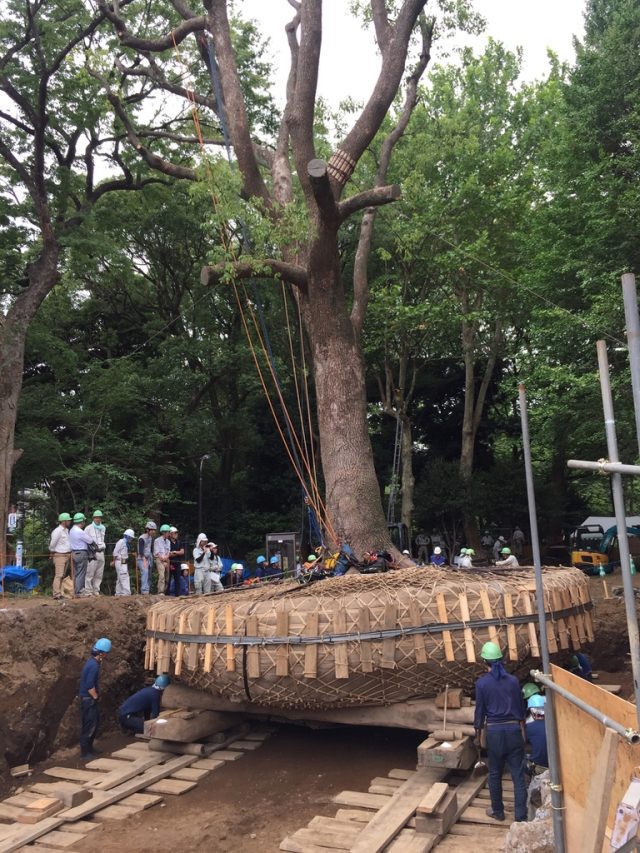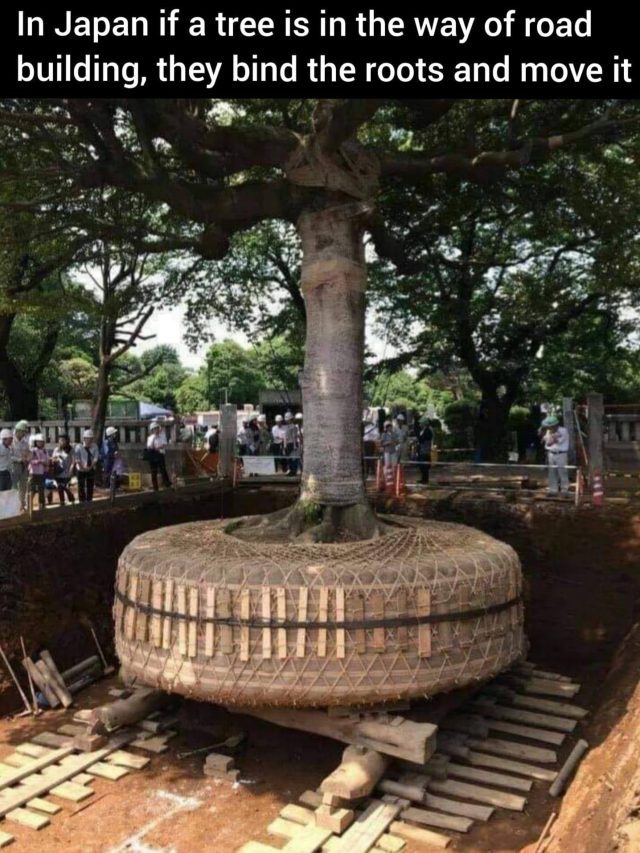Trees are the lungs of our planet, and keeping them safe should be a high priority for any environmentalist. City councils around the world are adopting more and more measures to protect the city’s green space, but there is still a lot of work to do.
But a recent event in Tokyo ward managed to restore everyone’s faith in humanity. The location is home to a lot of embassies, but it is also a residential area and was also hosting one of the oldest camphor trees in its historic Arisugawa park.
The old tree needed to be moved away from this place and the area’s residents all gathered to witness this majestic event. To move a tree is hard labor, and it implies engaging 70 workers to coordinate the transplanting of this 70-ton tree.
Japanese people have a special connection with nature and highly respect it, that’s why cutting down the ancient tree was not an option. The only acceptable solution, in this case, was to move the tree and the entire neighborhood gathered to encourage and celebrate the workers contributing to this special event.
CAN MATURE TREES BE TRANSPLANTED?
The best time to transplant any tree — whether small or large, is during the dormant period when it isn’t actively growing and trying to support leaves, flower, and fruit growth.
This period is when deciduous trees have lost their leaves or evergreens/conifers have slowed the supply of nutrients and water to canopies. This greatly reduces the chance of suffering transplant shock. The timing of this usually equates to fall or winter, but different trees have some preferences and consideration must also be given to local climate factors such as yearly rainfall patterns, snowpack, and frozen soil.
HOW BIG OF A TREE CAN YOU TRANSPLANT?
Similar to moving smaller, more manageable trees, transplanting large trees is possible using the right strategies, patience, and expertise.
Most trees will transplant and adapt to new surroundings over time if, adequate time and care are given to their, watering, fertilization, and preparatory root pruning before transplantation. Digging adequate-sized rootballs during the dormant season, and watering properly before and after transplanting is extremely important to reducing shock, decline, and death of trees. Continuing proper care after the move is vital to their survival since a tree can have a three to five year or more transition period as it settles into its new home.
A certified arborist will want to inspect the tree to determine the proper course of action. A risk assessment should be completed prior to transplanting, assuring it is not in decline from disease or rot (this could mean it would be too stressed or unsafe to attempt to move). The new location would also need to be evaluated, ensuring it is suitable for the specific tree being moved.
The big difference in moving a smaller tree versus a larger one is the equipment necessary for the job. Depending on the size of smaller trees, they can be dug and moved using anything from digging shovels to tree spades. While larger mature trees may require gradual root pruning/digging, rootball protection using wire, burlap, and plastic to minimize the loss of moisture, placement on a solid platform or in a crate, and movement by equipment such as inflatable rollers, a truck, a gantry system, or a crane.
















